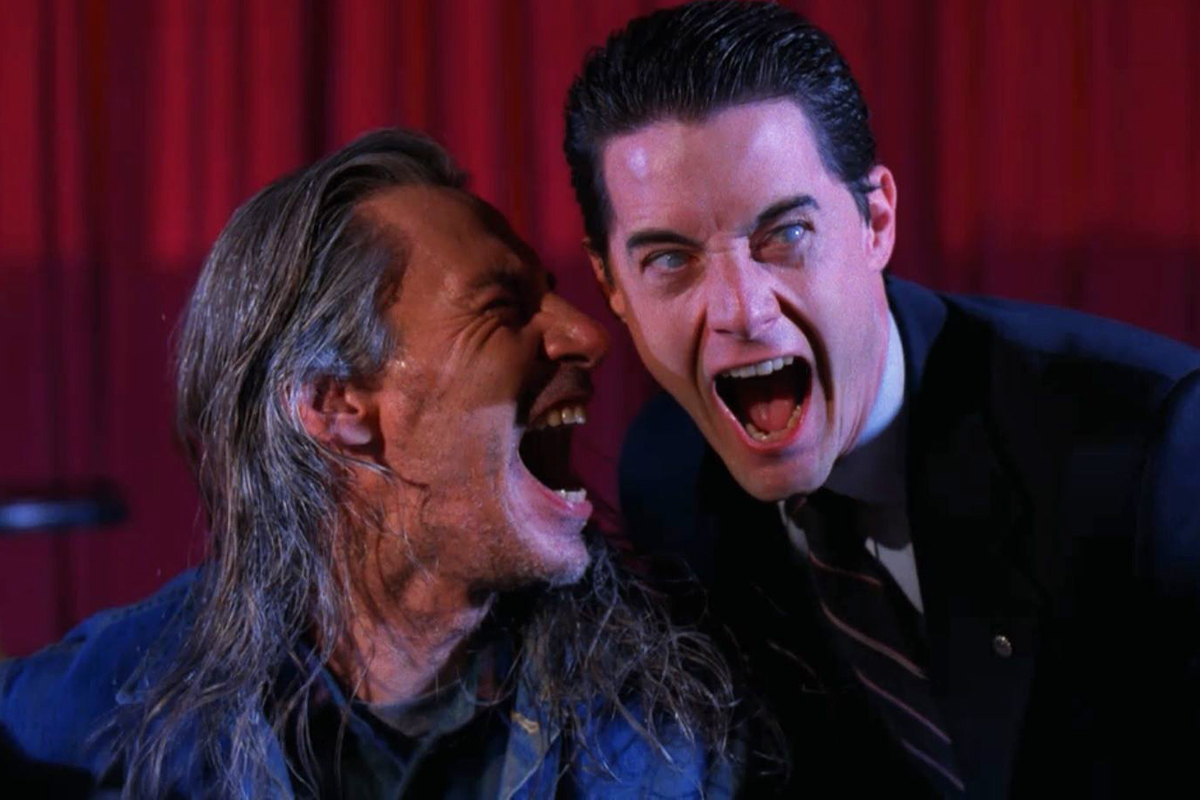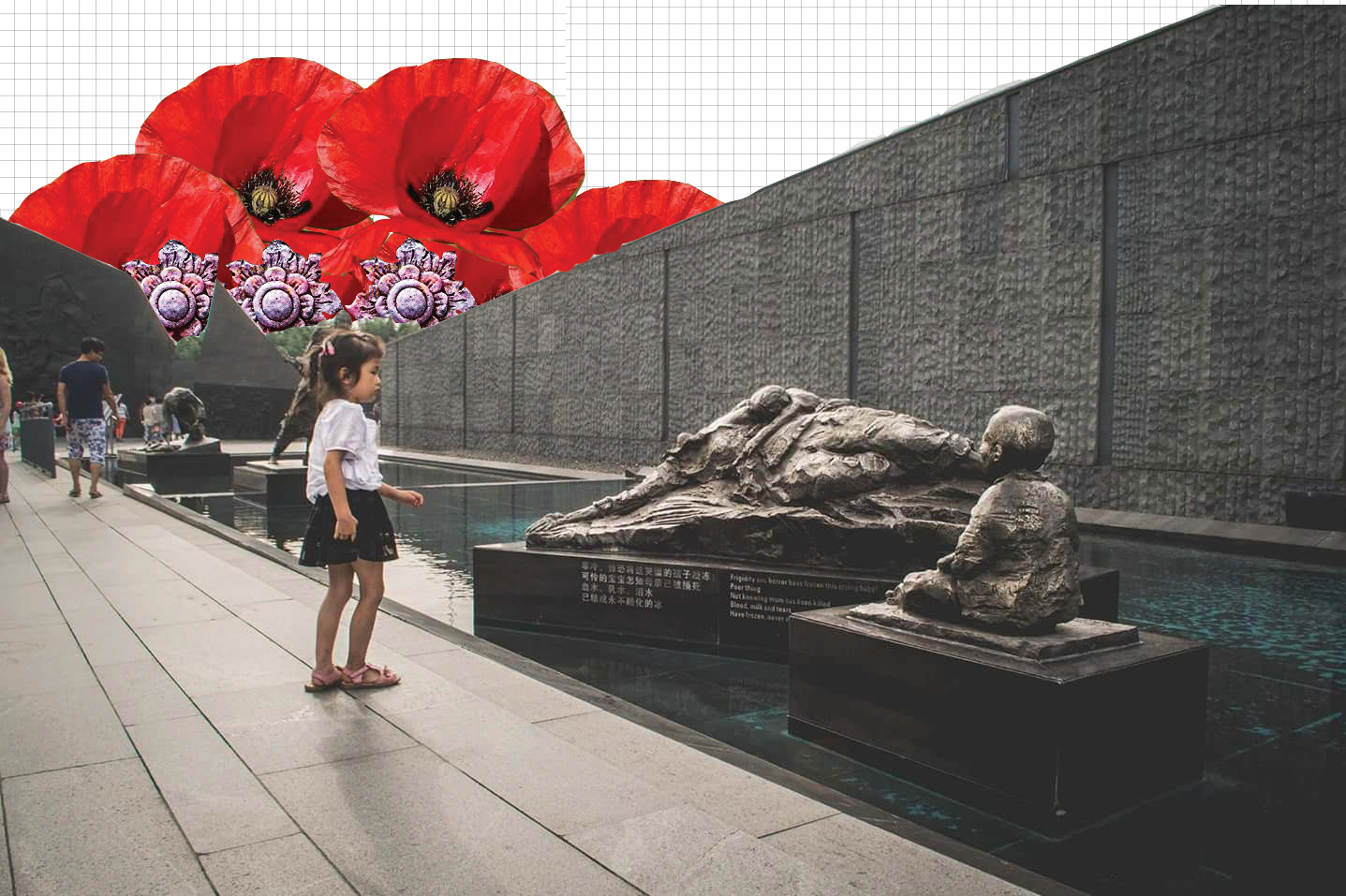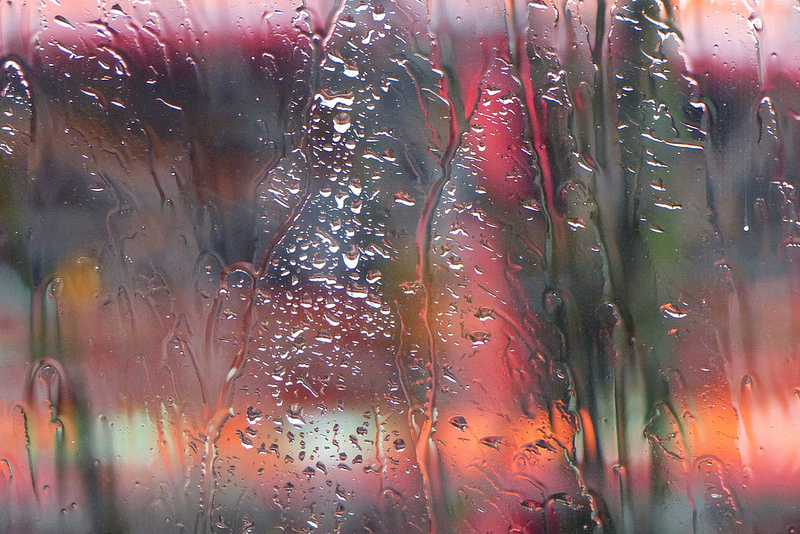
Whatever Happened to Baby Twin Peaks?
There are few shows on television that get to join the cult classics club. Some are comedy trailblazers: Friends, Arrested Development, Community. Others are dramas which either display stellar story-telling such as Firefly, or push the bounds of what we can discuss on television, like UnReal, which might be too recent to be called a classic, but already enjoys a privileged place in cultural conversation that will certainly make it cult. The latter shows enjoy a durable fanbase transcending cultural changes and generational gaps: it is amazing to think that we can still relate to a group of twenty-somethings in New York without Facebook or Instagram.
Another show you will almost always find in this list is Twin Peaks. Set in the small eponymous town of Twin Peaks, Washington, the series revolves around the fallout of a local girl’s murder, Laura Palmer, and the surrounding cast of bizarre townies. The series quickly takes a supernatural turn, as many of the clues, plot-points and motives are, for better or for worse, of a fantastical nature. With Twin Peaks set to return in 2017, picking up what the second season left hanging way back in 1991, there’s no better time to look back on its legacy.
I have found that Twin Peaks suffers from what we can call the Breakfast at Tiffany’s effect. As Karina Longworth points out in her excellent You Must Remember This podcast, we all know someone who has the film’s poster hanging in their dorm room without having ever seen it. And so the movie is reduced to Audrey Hepburn’s impeccable style and girlishness, erasing the more complex questions of gender roles, race and sexuality present both in the film and the book. Similarly, Twin Peaks‘s legacy has been reduced to the famous still of Donna crying; the show is the darling of hipsters, assumed to be of perfect quality, depth and intelligence. But the problem with this lionization is that erases the show’s asperities and fails to give us a correct understanding of how it actually played out. Twin Peaks, although great, is far from perfect. And therein lies the key question: how does the glossiness of certain cultural products, à la Breakfast at Tiffany’s overwhelm, or even prevent, any form of critical engagement? It is time to go back to the smoky mountains of Twin Peaks, past the lumber mill, past the Grand Northern Hotel, to look at the show’s fittingly bizarre endurance and the complex legacy it leaves in its wake.
Twin Peaks is, at least for its first season, tightly-written, full of stunning visuals, and possessing a gorgeous atmosphere which bears the mark of David Lynch, its co-creator alongside Mark Frost. It is often considered great television, placing in a great number of influential top twenty-five shows of the past years, such as The Times’ or Entertainment Weekly‘s. But past its glitzy legend, Twin Peaks has always struck me as an incredibly flawed show.
Firstly, the premise is a lot less original than we give it credit for: the murder of beautiful young girls is well-trodden territory. From Christian martyrs to Gothic writers like Edgar Allen Poe, to the Netflix documentary Making a Murderer or the Serial podcast, the aesthetic appeal of the female corpse seems undeniable, a claim which is probably as enduring as it is disturbing. Furthermore, the narrative of a small town full of secrets has been written time and time again by detective novelists such as Agatha Christie. This, of course, does not make the show bad television, but it certainly puts its ingenuity into perspective.
But the second, more important aspect, is that Twin Peaks all too simply fizzled out. I remember watching it for the first time and quitting the show after season two, episode twelve—one episode after we solve the murder of Laura Palmer. I remember feeling blindsided: the first season is seven episodes, while the second comprises twenty-two. So why is the driving plot solved mid-season? Where do we go from here? It is acknowledged that TV shows suffer from a sophomore slump. But to radically shift the plotline mid-season is almost a breach of contract. And as much as Twin Peaks could rely on its setting and kooky characters, the rushed introduction of a new villain surfacing from Agent Cooper’s past, providing the disjointed and convulated plot-line which lasts for the rest of the season, seemed to me like an emergency fix.
Watching the whole thing now, I am more forgiving, but this decision is still nothing more than narrative clumsiness. The first season of Twin Peaks was a well-rounded effort; its second, a failed experiment. Both creators went on record admitting to their mistake: David Lynch mentioned in a 2007 Entertainment Weekly that the screenwriters had “killed the goose that laid the golden eggs”, while he also blamed ABC network for pressuring him and Frost to give the Palmer plotline some resolution, even though it was originally intended that the crime remain unsolved. Frost, in 2010, expressed that he wished they had “worked out a smoother transition” from the murder’s resolution to a new plot. It is also of note that Frost and Lynch lost some directorial power during season two, as opposed to in season one, where they hand-picked directors from among trusted friends and colleagues. These mea culpas are proof that the failure of season two is less of an opinion, and more of a too-often brushed-over fact, which can be attributed to both the network and, to a lesser extent, its creators.
And it’s not only that. Another element of Twin Peaks‘s undoing, its deliberate soapiness, started out as one of its greatest attributes. Anybody who thinks Twin Peaks showcases heart-wrenching performances should watch The Young and The Restless, where they will find similar acting chops. It’s not that the acting is bad, the acting is great—as a comedic performance. The cast, containing powerhouses such as Piper Laurie, demonstrates great chemistry. At times, too, the soapy quality worked perfectly: at precisely the moment one character is watching the made-up daytime soap Invitation to Love, in which glamorous twin sisters Topaz and Emerald attempt to wrench control of the family business for themselves, in walks Madeleine, Laura Palmer’s dead cousin, played by the same actress except with glasses and dark hair. The meta quality of the show is probably one of Twin Peaks‘s most memorable attribute, and given the peritext of daytime television programs, its soapiness makes perfect sense.
But what made it great is a sense of balance, and Twin Peaks partly fell apart because it became weighed down by too much soap. Plot-lines thinned to gimmicks, and the sense of delicate melancholy Frost and Lynch had managed to create from their cast of profoundly unfulfilled people who have somehow missed their chance at happiness vanished as the second season wore on.
Soap’s best asset is its entertainment value, but as the episodes went by, Twin Peaks got less and less entertaining, despite doing more and more: a pregnancy plotline flatlined, a half-baked fraud plan did not escalate to any sort of exciting climax, and some characters’ deaths, such as Josie’s, simply felt forced and nonsensical, with a disturbing detail tossed in, such as the fact that her body weighed 74 pounds. Keep it tight, Josie! To explain why Twin Peaks fell victim to its soapiness, we can turn to ABC’s erratic programming of the show: unable to bolster a regular audience, the writers had to play on shock value to keep it part of the conversation. The results were mediocre, but in some ways, it was doomed by its initial concept. Look at 2014’s Jane The Virgin. The show was deemed so fresh and tightly-written that it got a Golden Globe mid-season, and still receives massive—and well-deserved—critical acclaim. But the hijinks are getting tired. Clichés pile on, death after evil twin after coma after amnesia. After a while, these ‘shocks’ become unsustainable.
And there were other problems too. What always struck me as terribly done on Twin Peaks was the romance. The great arc of season one inappropriately featured an eighteen-year-old high-schooler, Audrey, pursuing an older FBI agent, Agent Cooper. Although their relationship was creepy at best, it was well-developed enough that it made sense. But in the second season, Audrey pursues some bland aviator while Cooper decides to pine after Norma’s sister, played by Heather Graham. Both of these couples have little chemistry, and the rushed, confused nature of the romances smack of The Bachelor. And there is an explanation for this too: Kyle MacLachlan, who played Agent Cooper, was at the time involved with the actress playing Audrey’s friend, Lara Flynne Boyle. Apparently jealous of Audrey’s more compelling narrative arcs and greater screen time, Boyle vetoed an Audrey/Cooper coupling. MacLachlan followed suit, and what had been set up in season one had to be destroyed and then hurriedly replaced, without the best interests of the show in mind.
With this run-down, anybody would agree that despite its numerous assets, the television programme was also fundamentally flawed. Yet we forgive Twin Peaks, and make it a cultural staple. And the linchpin (pun intended) to this is a question of branding, rather than actual quality. To return to the example of Breakfast At Tiffany’s, the reason some young people express in an interest in a film they haven’t even seen is because it encapsulates the breezy and sophisticated sixties, a far cry from what is perceived as shameful modern celebrity trash of Kardashians and the Real Housewives (my defense of you can read here). To like Breakfast At Tiffany’s is to imply that one adheres to its values, that one is cultured, fun, and eternally chic. That one is different. For Twin Peaks, the brand built itself around David Lynch. As a hipster darling, Lynch’s presence allowed for the show to be seen as so-called ‘high-art’, and so the brand was clear: to like Twin Peaks is to represent oneself as dark, intoxicating, intellectual, and sophisticated. The legend of Twin Peaks extends far beyond its screen presence.
To prove that Twin Peak‘s critical reception defies its faults as a piece of television we only need to look to its fanbase: the show mostly appeals to hipsters, a term I do not use to dismissively. A huge part of that appeal is Twin Peaks’ distinctive aesthetic, easily recognizable and giving the show a 2000s afterlife through pictures, gifs, and memes. Twin Peaks now seems deliciously retro. Its small-town, ordinary clothes are not as gaudy and cringe-worthy as the Friends wardrobe department, giving the show the illusion of eternal chic, and its familiar aesthetic motivates its very own Breakfast At Tiffany’s effect: one need not watch Twin Peaks, but instead choose one of its stills as a Facebook cover photo to reap the benefits of brand association.
But, in a triumph of style over substance, the show demonstrates almost none of the values usually held so dear to that forward thinking fan demographic. In this television series, little attention is paid to feminism, safe spaces, or racial equality. Twin Peaks is unabashedly terrible to women—they are underwritten to the extent that they tend to be either in danger of dying, or already dead. Indeed, the show makes great use of the “woman in the fridge” trope, a term coined by Gail Simone in 1999, which describes the technique of using a female corpse as the motivator for male characters to act. Women catalyse the action of Twin Peaks, but have no role in its actualization. Audrey, the female character who is often singled out as the show’s breakthrough star, is far from a satisfying character: she gets lost in complex plots, and the lack of characterization results in her becoming a simple ‘cool girl’—she is very beautiful, well dressed, reasonably witty, but ultimately unchallenging. Perhaps the only interesting woman is Laura, but all too curiously, the most sexual female in the TV show is also the dead one. Not only that, but the show’s bizarre integration of a transsexual character who is regularly misgendered, played for laughs, and used as a prop in a kidnapping arc is troubling at best. This is not to say that Twin Peaks is bad television. After all, True Detective’s attempts to be progressive in its second season failed miserably, and while its first season was also full of terrible female characters, it was amazing work. The takeway here is that Twin Peaks‘ demographic and its values do not align: this is a perfect case of selective memory, glossed over in its reception thanks to Twin Peak‘s carefully crafted brand. Similarly, most Breakfast at Tiffany’s fans will gaze contentedly at Audrey Hepburn’s elegant cigarette holder, but would probably hesitate before hanging up a portrait of Mickey Rooney’s yellow-face portrayal of Mister Yunioshi. Once more, the appeal of the brand warps our reception, and allows us to misunderstand the products as a whole. To acknowledge the racism of the sixties or the misogyny of the early nineties is not to blindly condemn it; rather it is to replace it in its proper context.
If we do not historicise culture, we run the risk of stagnating: how are we expected to progress from Twin Peaks’ terrible female characters if we do not even admit that they exist?
However, much like the majority of Breakfast At Tiffany’s fans, there are many Twin Peaks lovers who have seen the show. And so it might be worth taking a step back and try to find what explains its allure. Perhaps its popularity has something to do with its thematic content. Stripped of any artifice, Twin Peaks plays out the eternal battle between good and evil, personified by the characters Mike and Bob. It becomes clear early on that whatever petty squabbles exist in the town happen as part of a spiritual backdrop.
Twin Peaks’s overt spirituality is refreshing and bold, much of it stemming from the choice to make the devil part of its cast. Most shows prefer developing their villains in different ways, by granting them tragic backstories or at least a motive different from just being ‘evil’. But there is no accessing Bob in Twin Peaks, who is simply the embodiment of vice; this makes Twin Peaks one of the least morally nuanced shows on television, and its refusal to compromise on its ethical values might be what makes it great. In this fictional world, there is evil, pure and unadulterated. And the presence of evil reassures us that at the other end of this moral spectrum lies absolute good. By offering us the soothing belief in both good and evil, while remaining completely detached from what could become an alienating narrative of organized religion, is why a modern audience can be receptive to Twin Peaks. In a world which has never been as unsure, riddled by the fear of the enemy within, Twin Peaks‘ simplicity, its belief that we are not mixed beings of good and evil, but rather that they exist as separate entities, has never been more reassuring.







